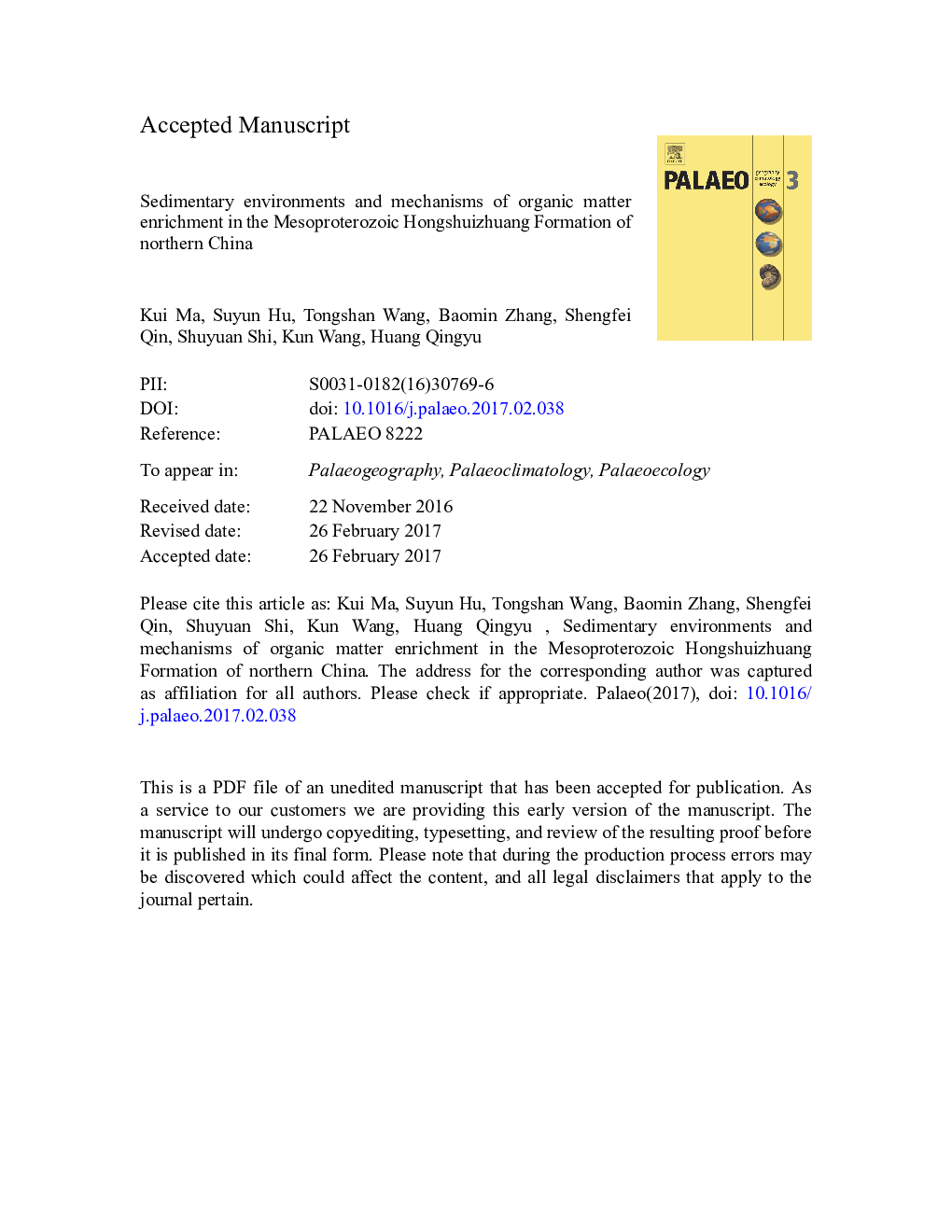| Article ID | Journal | Published Year | Pages | File Type |
|---|---|---|---|---|
| 5755684 | Palaeogeography, Palaeoclimatology, Palaeoecology | 2017 | 46 Pages |
Abstract
The Mesoproterozoic Hongshuizhuang Formation in Jixian, northern China, is a hydrocarbon source unit containing abundant organic matter. We investigated the mechanisms controlling this organic matter accumulation by analyzing the sedimentology and geochemistry of the Qinghe section, in the Kuancheng region of northern China. Trace element geochemistry suggests that organic matter accumulation was controlled primarily by marine productivity, which was the main determinant of redox conditions. Elevated marine productivity and consequent anoxic-sulfidic bottom water conditions were coincident with accumulation of the organic-rich (TOC > 1.0%) lower part of the Hongshuizhuang Formation. Deposition of the organic-lean upper Hongshuizhuang Formation appears to have been coeval with diminished productivity and a transition to oxic-suboxic redox conditions. Enhanced organic matter accumulation in the lower Hongshuizhuang Formation was promoted by a warm, humid paleoclimate and submarine hydrothermal activity. Average Rb/Sr ratios (3.42) and negative carbon isotope excursion reflect a warm climate, likely caused by the release of volcanogenic CO2. Warm conditions would have promoted continental weathering, and increased the flux of nutrients into the oceans, enhancing marine productivity. An increased supply of nutrients and enhanced marine productivity would have depleted oxygen in the bottom water environment and favored the proliferation of sulfate-reducing bacteria, leading to anoxic-sulfidic conditions. The relative stability of δ13Ccarb values suggests that organic matter enrichment in the Hongshuizhuang Formation reflects changes in surface water productivity and redox conditions, caused by climate-induced sea-level fluctuations. Shale-normalized rare earth element (REE) distributions show a depletion in light REEs and enrichment in heavy REEs, positive Eu anomalies, and mean Y/Ho and Ba/Sr ratios of 33.2 and 9.91, respectively, suggesting that deposition of the Hangshuizhuang Formation was accompanied by submarine hydrothermal activity.
Related Topics
Physical Sciences and Engineering
Earth and Planetary Sciences
Earth-Surface Processes
Authors
Kui Ma, Suyun Hu, Tongshan Wang, Baomin Zhang, Shengfei Qin, Shuyuan Shi, Kun Wang, Huang Qingyu,
